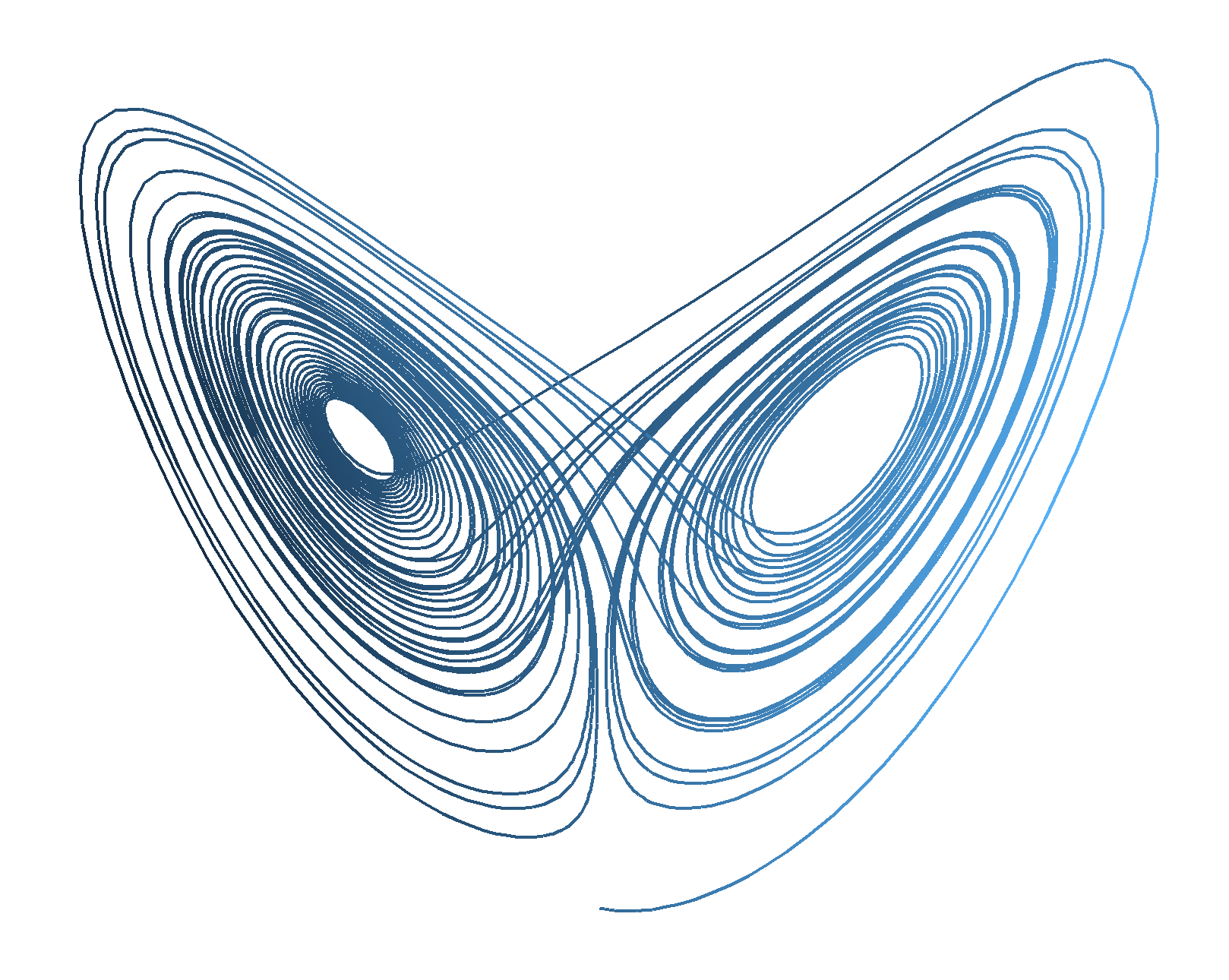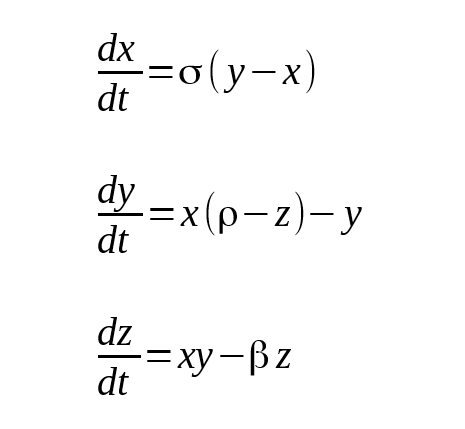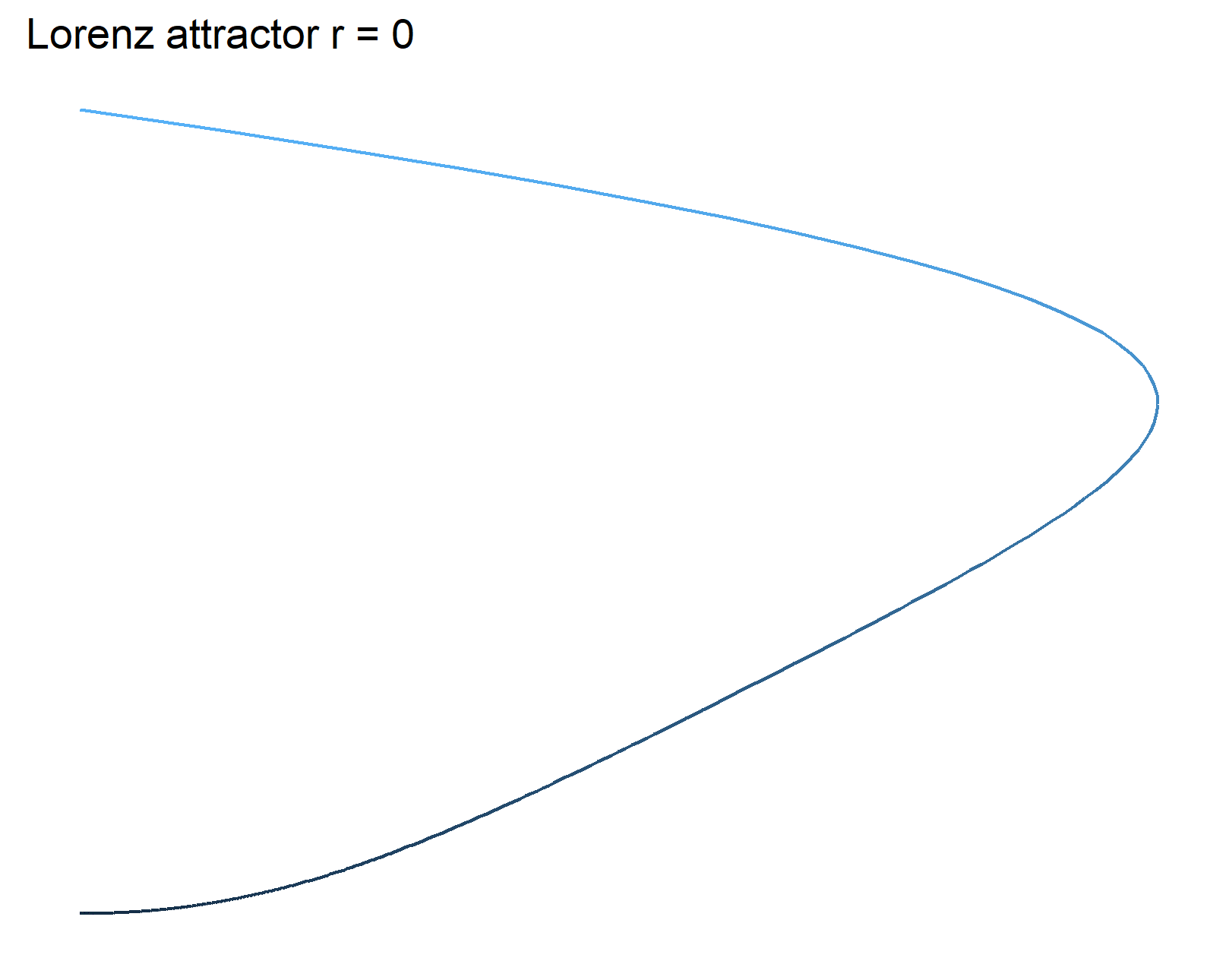
Growing a Lorenz Butterfly in R
The Lorenz equations spawned the term ‘Butterfly Effect’. They are a set of mathematical equations that display chaotic behaviour (and produce some pretty graphs):
The equations model atmospheric convection for given starting states in x,y,z and for a set of constants σ, ρ, β. We’ll vary ρ and create an animated gif using R see how a Lorenz butterfly grows.
We’ll use deSolve to solve the equations and ggplot to create the plots.
library(deSolve)
library(ggplot2)Let’s set up the parameters and initial states. The classic parameters are σ = 10, β = 8/3 and ρ = 28. We’re seeing how the butterfly grows as ρ varies so r (ρ) is a sequence.
parameters <- c(s = 10, b = 8/3)
r <- seq(0, 30, by = 0.05)
state <- c(X = 0, Y = 1, Z = 1)
times <- seq(0, 50, by = 0.01)We define the Lorenz equations as a function for deSolve. This vignette describes the structure of the function.
Lorenz <- function(t, state, parameters) {
with(as.list(c(state, parameters)), {
dX <- s * (Y - X)
dY <- X * (r - Z) - Y
dZ <- X * Y - b * Z
list(c(dX, dY, dZ))
})
}We can now run the solver for each value of ρ and keep the results in a list. I’ve chosen the Euler method because I know how to hand crank it.
out <- lapply(r,
function(x){
ode(y = state,
times = times,
func = Lorenz,
parms = c(r = x, parameters),
method = "euler")
}
)Next we make our plots and save them to disk to turn into our animated gif.
imageStorePath <- '\\images\\lorenz_r\\'
plots_XZ <- list()
for(i in 1:length(r)) {
p <- ggplot(data.frame(out[[i]])) +
geom_path(aes(x = X, y = Z, colour = Y)) +
ggtitle(paste0('Lorenz attractor r = ', r[i])) +
theme(
axis.text.x = element_blank(),
axis.title.x = element_blank(),
axis.text.y = element_blank(),
axis.title.y = element_blank(),
axis.ticks = element_blank(),
panel.background = element_blank(),
legend.position = "none")
ggsave(filename = paste0(imageStorePath, sprintf('%05.2f', r[i]), '.png'),
plot = p,
device = 'png')
plots_XZ[[i]] <- p
}A system call to ImageMagick’s convert makes our animated gif. This isn’t the most efficient way, but it works…
imageMagick <- '"C:\\Program Files\\ImageMagick-7.0.7-Q16\\convert.exe"'
system(paste0(imageMagick, ' -loop 0 -delay 10', # call imageMagick
paste0(' ', imageStorePath, '*.png '),
' -layers Optimize ', # compress the gif
imageStorePath, 'lorenz_XZ_vary_r.gif'))Finally we tidy up our intermediate images.
for (i in 1:length(r)){
file.remove(paste0(imageStorePath, sprintf('%05.2f', r[i]), '.png'))
}Thanks for reading.

